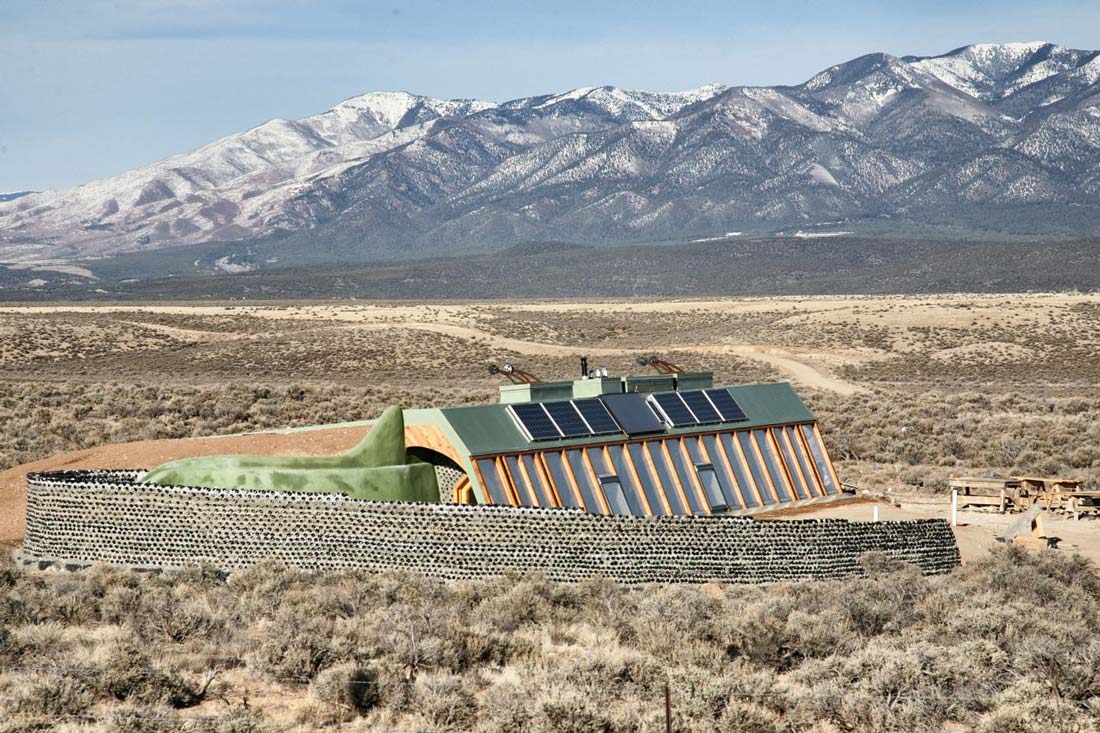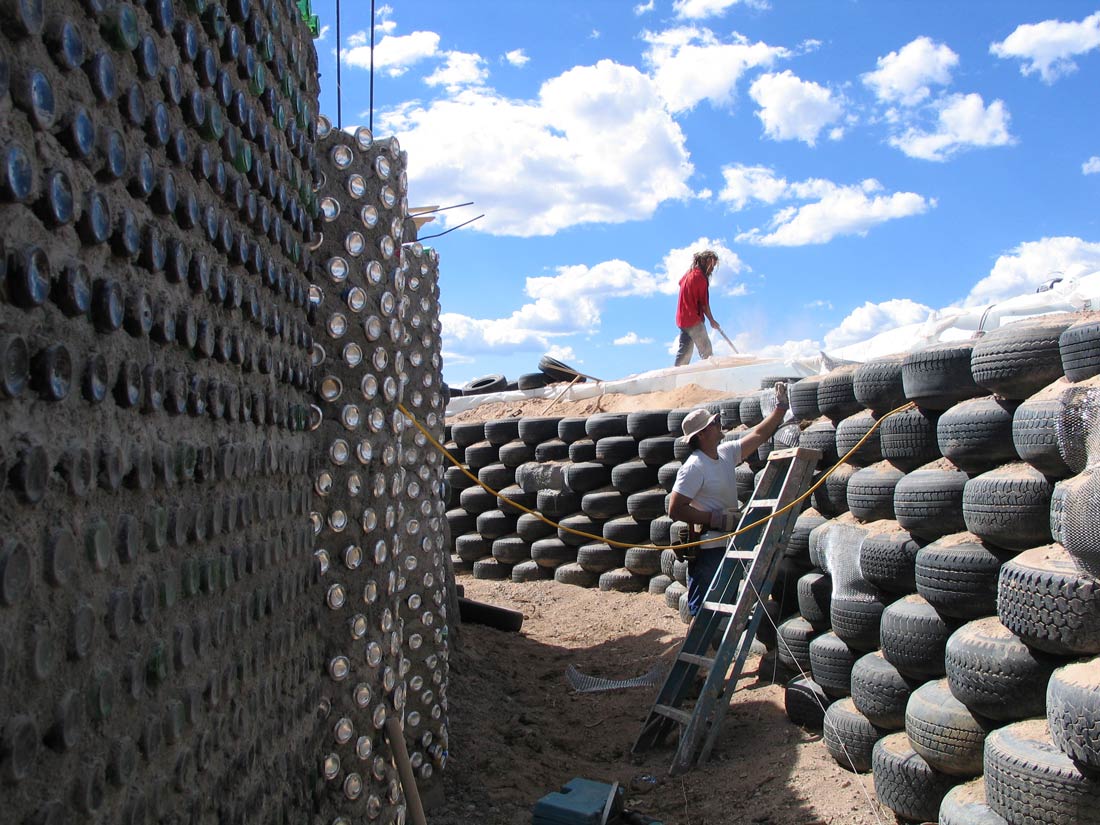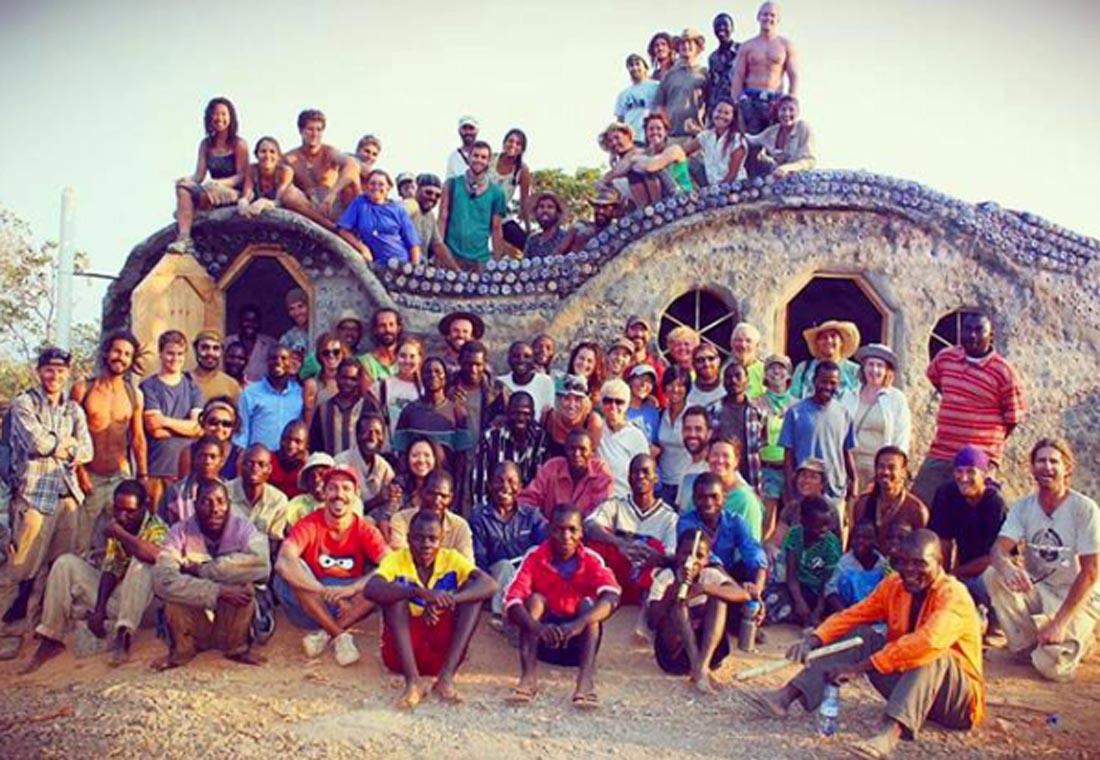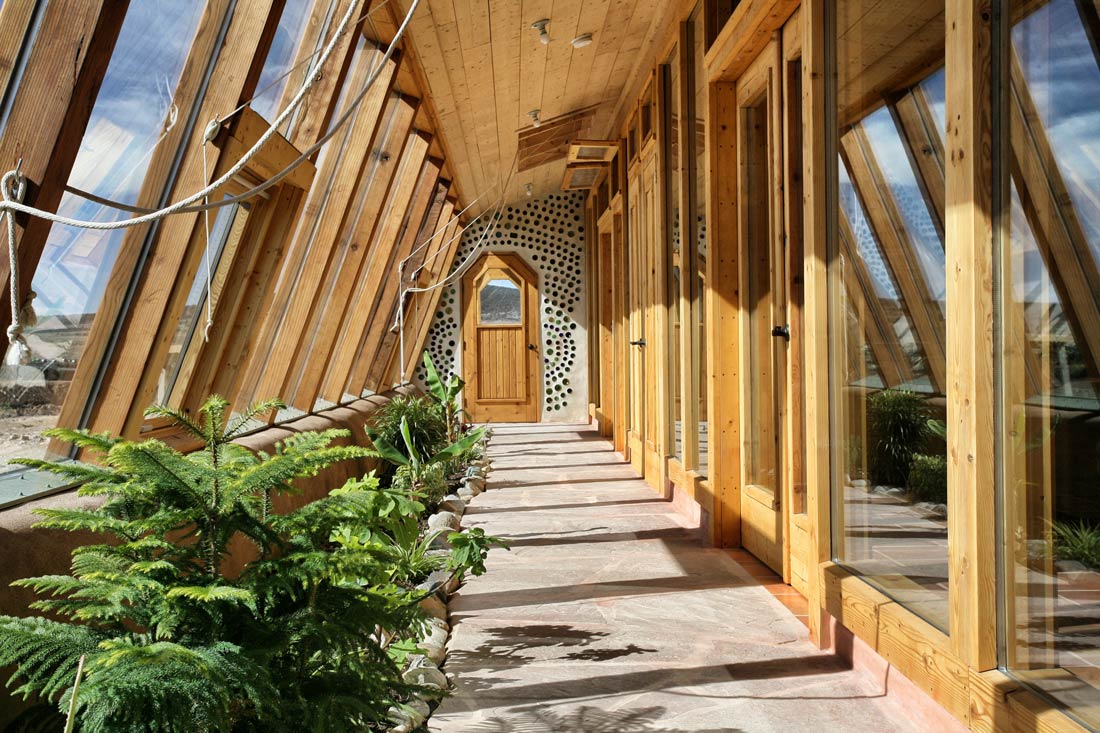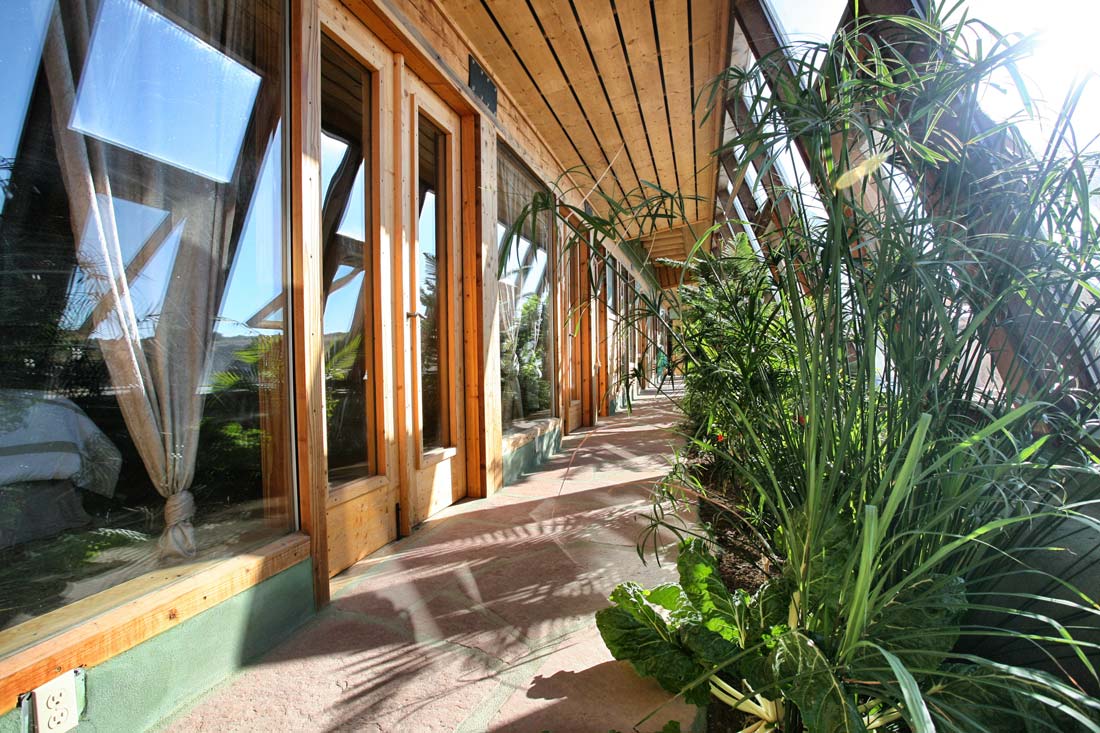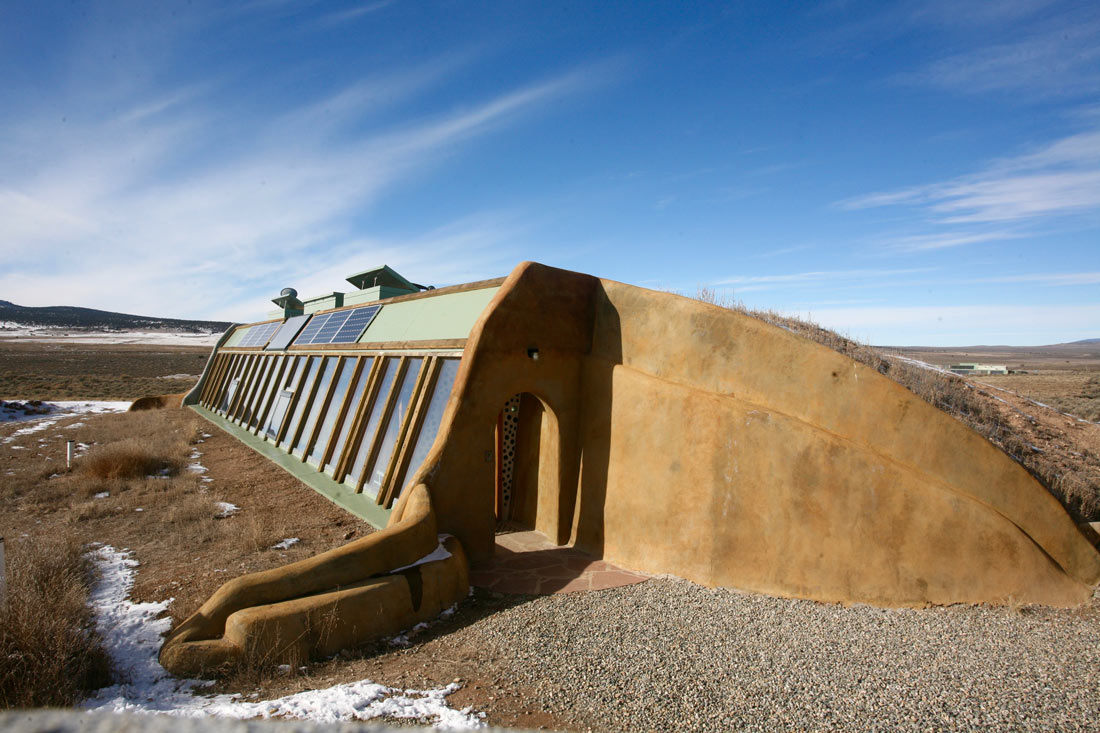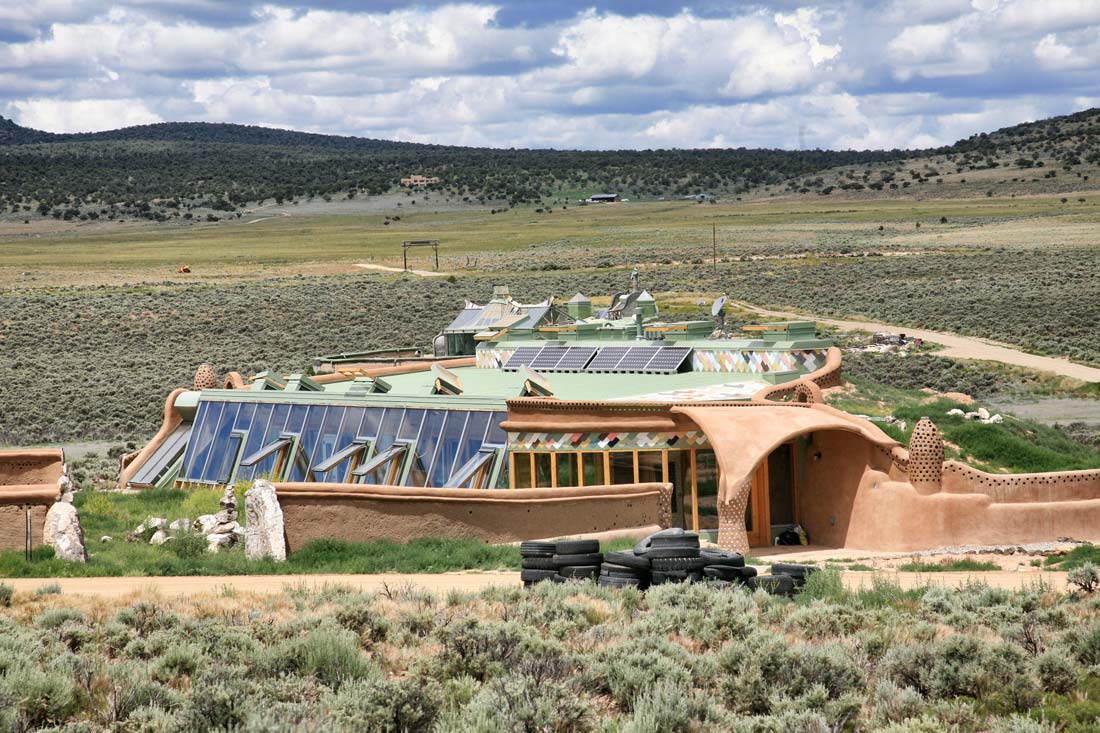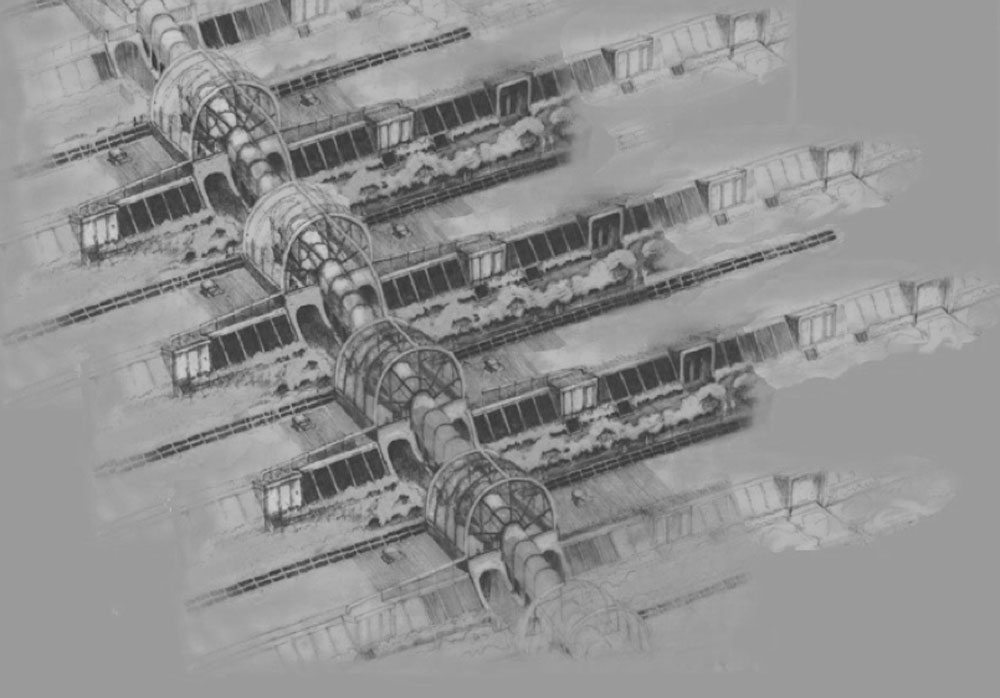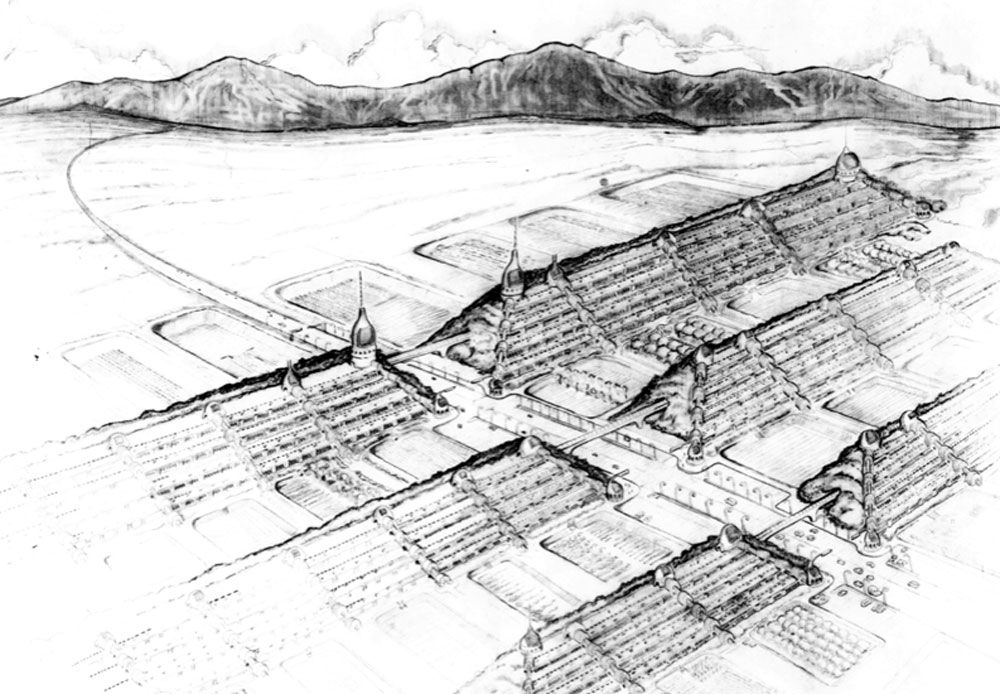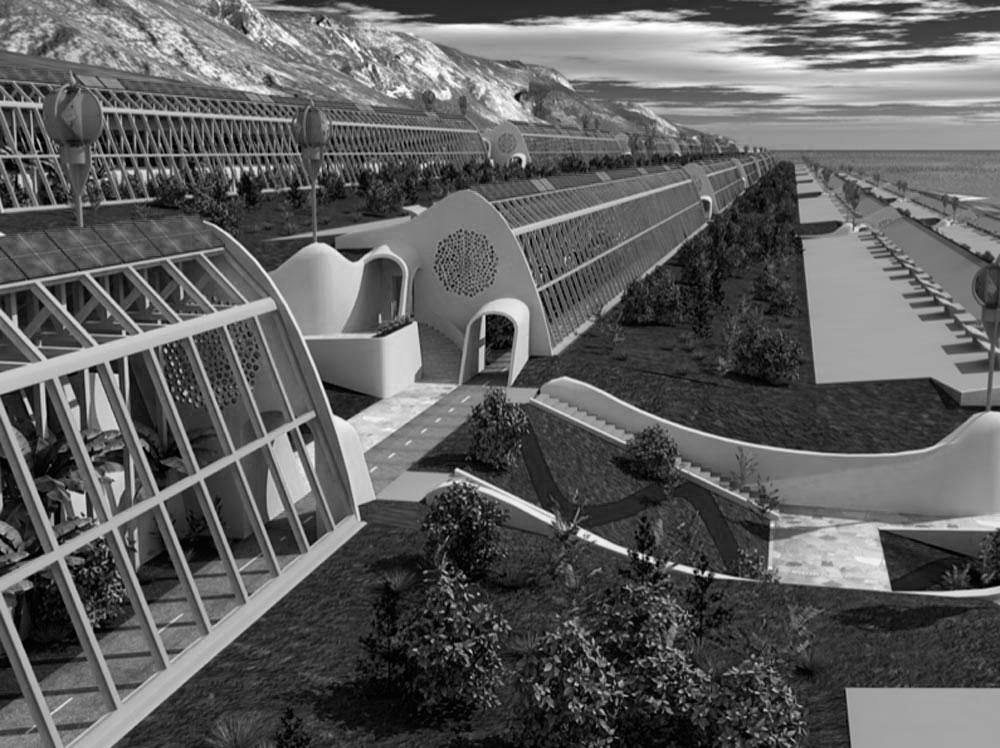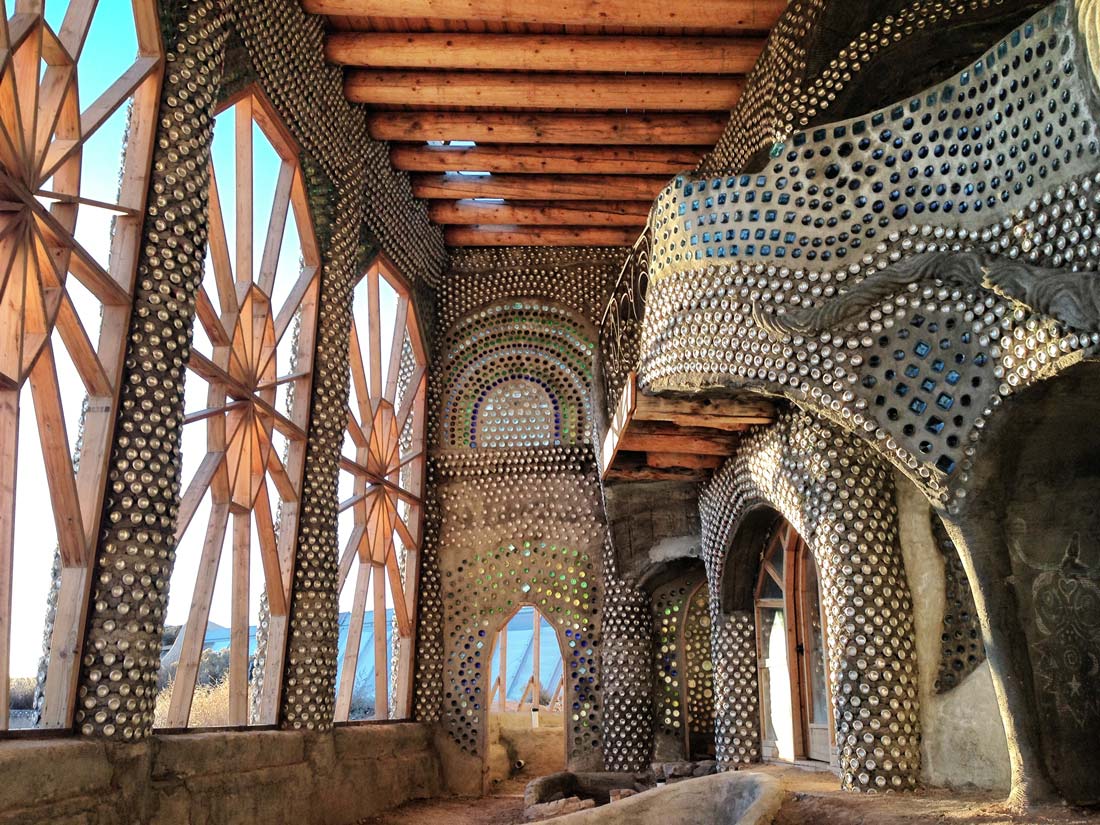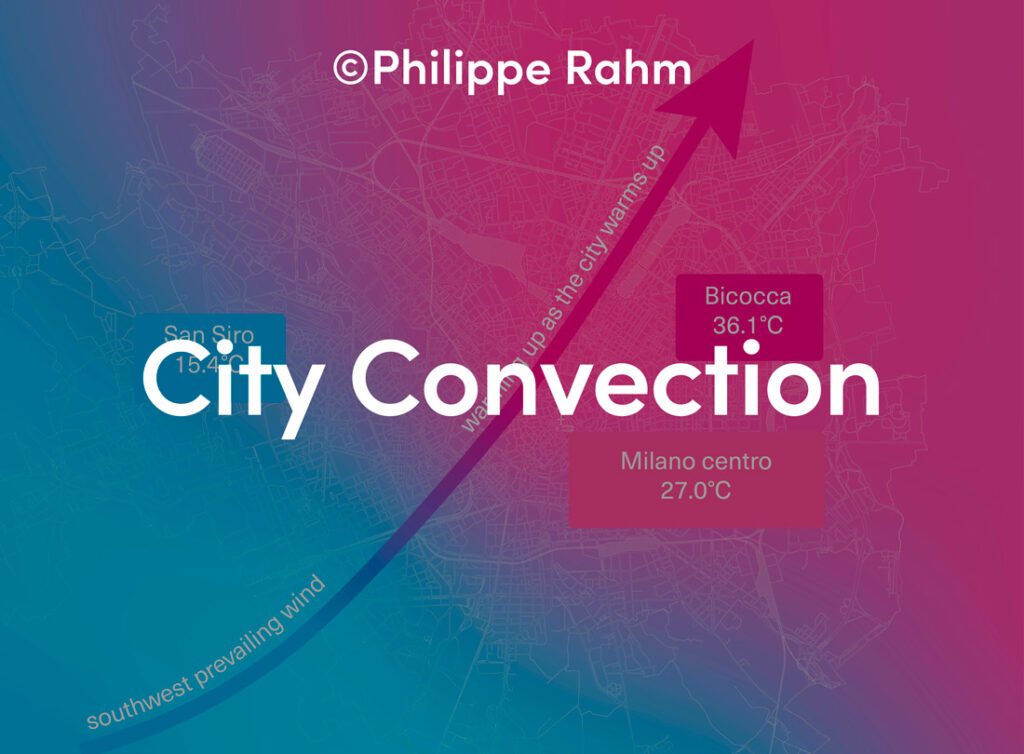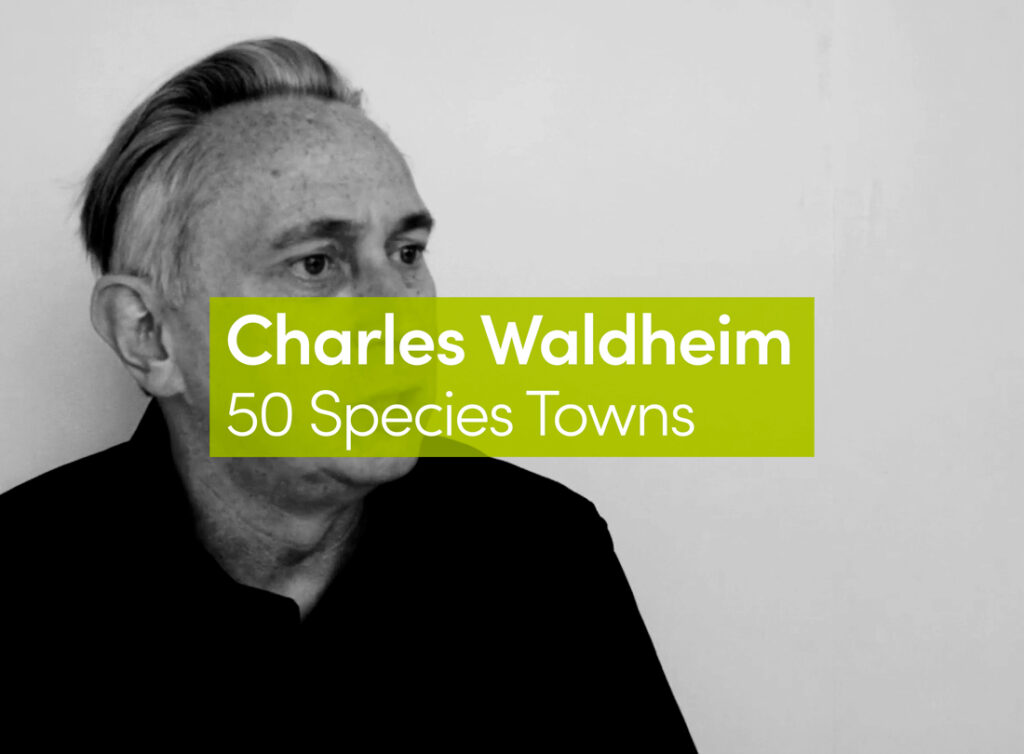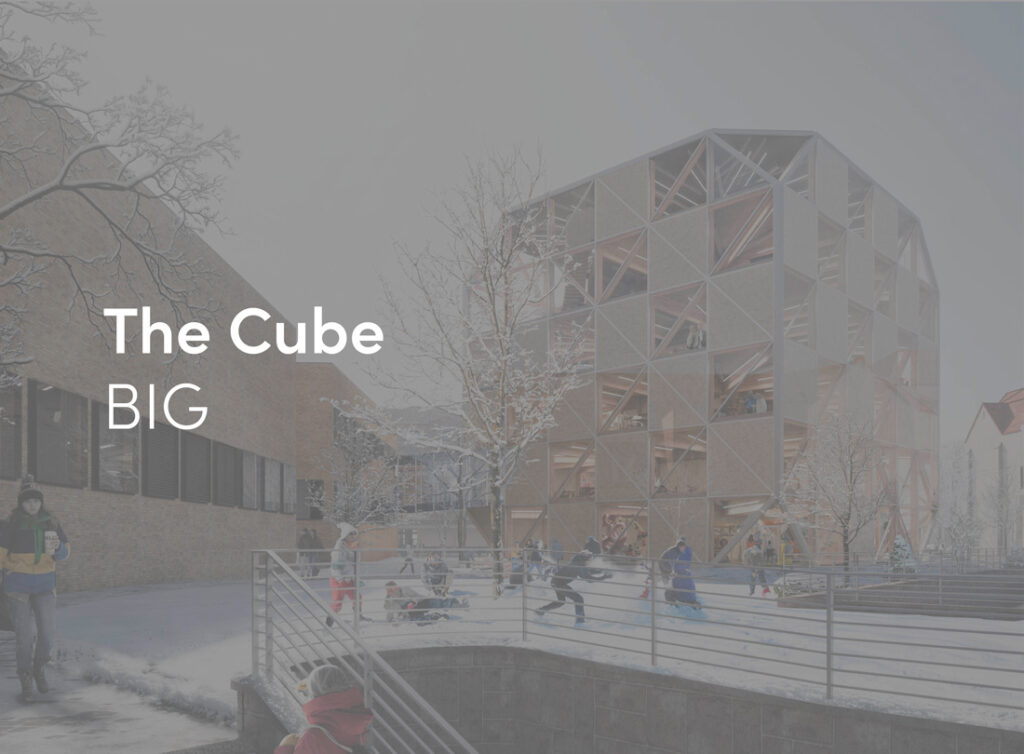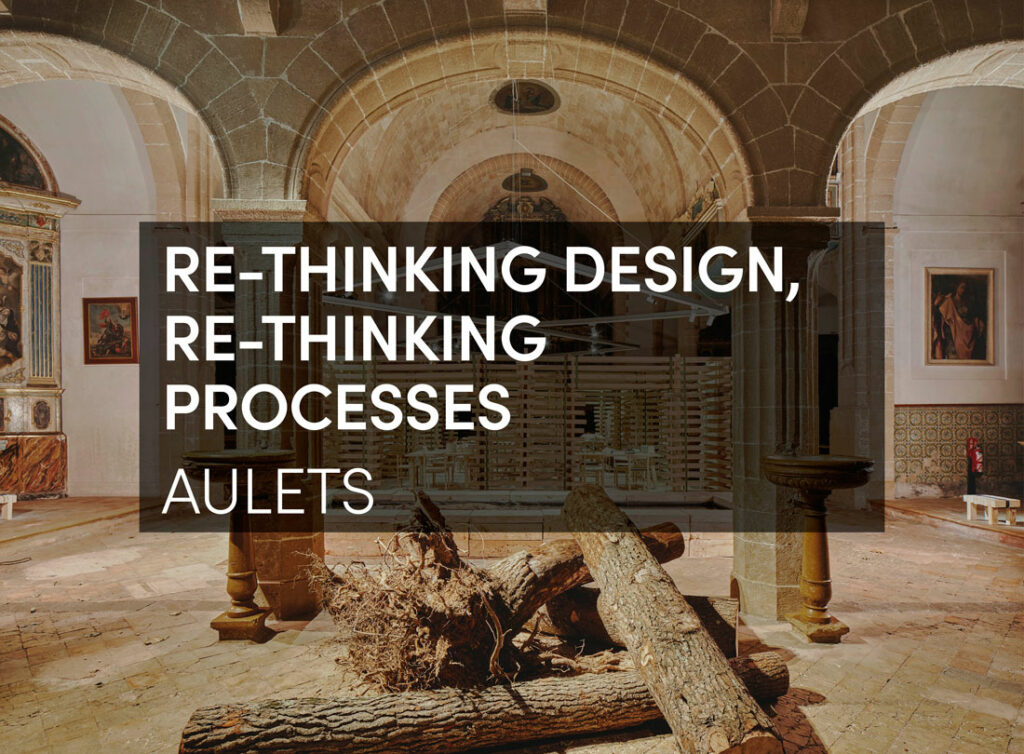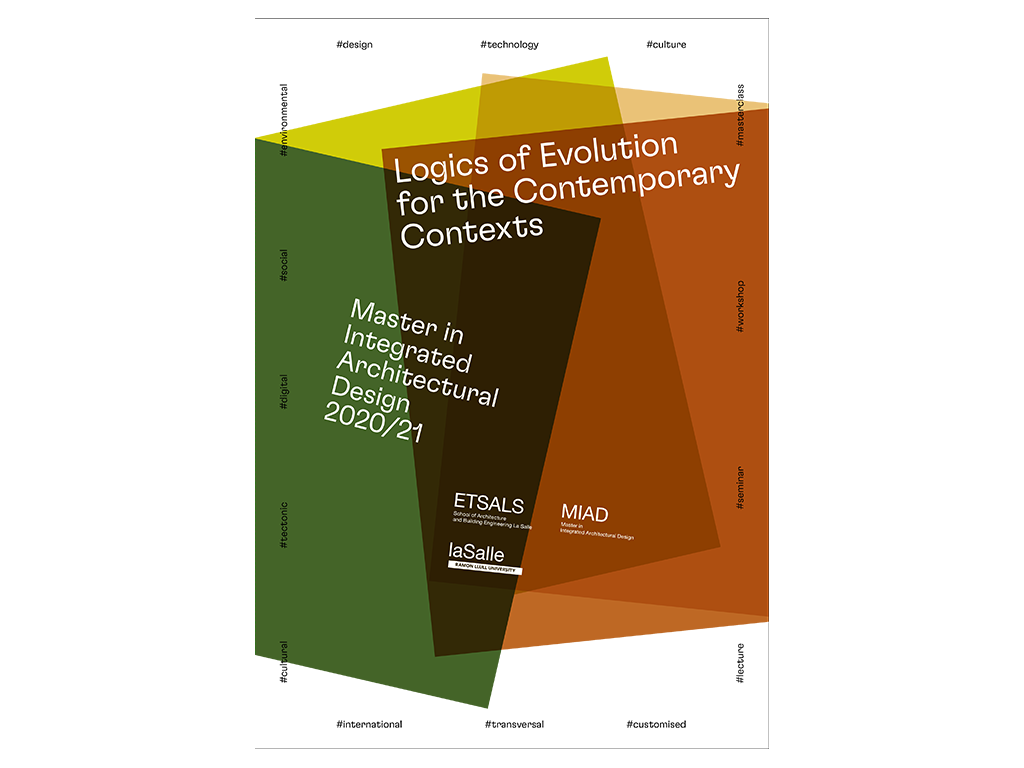Michael Reynolds is the architect, founder, and creator of the Earthship Biotecture concept which today is an eco-construction company known worldwide. After graduating from architecture school at the University of Cincinnati in 1969, concerned about the problem of trash and the lack of affordable housing, Michael started experimenting and building using discarded materials. Over the next decades, designs constantly evolved incorporating thermal mass, passive solar energy and natural ventilation as means to respect the environment and to counteract climate change thorough architecture.
The resulting project was the Earthship, an autonomous self-sufficient house built with natural and recycled materials with energy conservation in mind. Designed to produce water, electricity, and food for its own use, Earthships are defined by six basic design principles, all of which take advantage of the existing natural phenomena of the earth: building with natural and repurposed materials, using thermal and solar heating and cooling, solar- and wind-generated electricity, water harvesting, contained sewage treatment and self-sustained food production.
“My name is Michael Reynolds. I started as an architect but I have moved into what I call Biotecture, which is a kind of profession that we molded and created and I think is where architecture needs to go today and in the future.”
urbanNext: And where does architecture need to go?
Michael Reynolds: It needs to be released! The current definition of architecture is about buildings and it’s kind of about architects, in my opinion, and not about people. Architecture needs to be by and for people. They are the ones we are trying to take care of at Earthship Biotecture and we’re trying to do it in a way that is in harmony with the planet. So, architecture should be about people and planet, and nothing more.
I have been looking for decades at the idea of taking care of the planet to provide our sustenance, and architecture is the vessel to do that.
This vessel that we call the Earthship addresses six things that are the basic aspects for existence and survival all over the world: confortable shelter with no use of fossil fuel, natural-sourced electricity generation, water harvesting, treatment of sewage onsite, garbage, and food production.
uN: Is this why you define your work as radically sustainable living?
MR: It does seem to me to get somewhat radical due to the fact that there are a whole lot of established criteria for architecture at this point and it’s radical to move away from that and to just give it to the people.
uN: In that sense, which obstacles did you have to overcome with the Earthship project when moving counter to the restrictions and the building codes?
MR: The building codes were introduced long ago to protect people, and I think that was a good thing. But, like so many things, their protection has grown to be a choking situation. We’re being choked with our own protection, and it is keeping us from evolving. I think that’s the crux to the issue right there. We are not evolving because we won’t let ourselves.
At Earthship Biotecture we’re looking at a way to step outside of these codes and regulations, and that’s why we go all around the world. In the Mahayana islands, in the mountains of Colombia, or in the island in Indonesia where we went there are neither codes nor regulations. There we’re able to pursue methods of sustenance for people without the incongruence of those codes.
In fact, we’re doing two things at once: we’re trying to make the Earthship concept work and fit into the codes and regulations in metropolitan areas as much as possible, knowing that that slows down its progress and evolution. And, at the same time, we are at frontier land doing whatever we think will take care of people and planet. One teaches us about the other.
The reason why I invented something called Biotecture is because architects have their own codes and regulations that don’t allow you, for instance, to run sewage through the living room. That’s what I got accused of. I have designed buildings that look like an Amazon rainforest in your living room with birds flying around and bananas ready to pick and eat, nurtured by re-used grey water from the bathtub and shower. So they accused me of running sewage through the living room. Well, they are right, I am, but I’m doing it in a way that works.
That’s why we call it Radical Sustainability, because there’s no time for us to waste. I did spend four years waiting for a law to pass in New Mexico and I will never waste my time doing that again. I’ll just go where there’s no need for a law.
Also, the more catastrophes that happen, the more the authorities are willing to look at something new. Especially after a complete disaster, they’ll take anything to get people housing and water.
It’s a constant battle, but we have got many examples all over the world and more happening all the time, and we’re noticing that when we do get the chance to execute it properly we don’t have to convince people, all they have to do is walk into one of these buildings and see.
One thing we have learned and keep seeing over and over is that when there is an earthquake or a hurricane and it devastates everything, like in Puerto Rico or Mexico City right now, that presents a kind of hole in the dogma. That’s why we go there, because they are almost desperate for those very six basic needs I’ve just mentioned. They are desperate for shelter, for water, and when people are desperate, the codes and regulations don’t prevail, the need of water does. In other words, if there’s no water and 10,000 people are dying of thirst nobody’s thinking about codes and regulations.
When we go there we see that they need the same six things that we need in the developed world, which is not so desperate but approaching being desperate.
There is no person in any tribe, village, or city that doesn’t need to address these six things. The same things are needed everywhere, they’re needed in Mexico City after the earthquake, and they’re needed in New York City, Chicago and London right now. They’re needed by everybody, just in varying degrees of desperation, and we all know that it’s going to be more desperate as time goes on.
uN: Earthships are low density constructions, mainly houses. Taking into account the worldwide exponential demographic increase and the densification of cities, do you think this approach could be applied in a higher density or in an urban scale?
MR: We have drawings, designs and applications for multi-level structures that house living spaces that address these concepts. For instance, we have a client, a site, and a design for Midtown Manhattan. We have designed multi-level structures that would work in any city; we also have designed whole cities.
We are aware of the fact that these one-of little applications of people being in an Earthship and having everything for themselves is not enough for the world to really get its teeth into what it needs. The world needs entire villages and cities that address these six points.
In order to build a village or a city from scratch, the first thing you need to do is to spend years and millions of dollars, if not billions, putting in infrastructure. Well, an Earthship is a cellular unit that provides everything for itself by encountering the phenomena of the planet. So, there is no need for infrastructure. I could start building a city in a desert in Nevada tomorrow, just by starting one Earthship. It’s a cellular unit that generates its own power, water, and sewage; it’s an independent cell that provides everything for human inhabitance. All you need to do is make unit, after unit, after unit. Then infrastructure becomes an archaic thing of the past.
There are several ways to bring the Earthship into a superstructure that receives it just so it’s the same exact vessel that we would do out in the country to a line assembled in the city. For example, we’re doing a six-storey tower in the Lower East Side in Manhattan with an Earthship on top.
When Hurricane Sandy came, half of the people in Manhattan were left without toilets, without water, and without heat. In this building you would always be warm and have your toilet and water functioning, because it’s independent.
This unit that we’re placing in New York City will make a statement that millions of people will see every day and that will cause people to see that architecture must become infrastructure and building all in one. It must replace infrastructure.
Right now in Manhattan they are condemning farms in upstate New York to bring a twenty-foot pipeline down from the mountains to provide water for New York, when water falls from the sky. Why are we going through that trouble? And why are we dumping sewage and garbage into the Hudson River and the Hudson Bay when we can consume our sewage and garbage? Our sewage and garbage, to me, are gold. I build out of garbage and it’s better than most building materials. I used sewage to grow food, so I disappear sewage and turn it into food. And it doesn’t have to be piped away in an infrastructure. This is archaic.
We can make that point to people and when they do see it, they are amazed. We have nightly rentals here in our home base and when people come they just can’t believe this is possible. And it’s nothing but biology and physics.
uN: If we stopped to think about the environment and the planet, how important would the role of the architect be in order to find solutions for a more sustainable development?
MR: I think the architect has the training structurally to make physically manifest shelter for people and buildings that people use. But if only they included the understanding of these six points which are all available by direct encounter with natural phenomena, like the sun, the rain, the wind and the biology of plants, the physics of thermal mass, the physics of convection, the physics of condensation. If all of these things were just recognized, architects could lead us to a better world.
uN: After the introduction of these six concepts, what is the form that derives from it? How much are aesthetics relevant to you in the design process or how much are they a consequence of its construction and functioning?
MR: I love to play around with aesthetics. In fact, in the early years I was a painter and a sculptor. I am into aesthetics, but if I make a beautiful boat, carved and sculpted, and that boat sinks and it doesn’t float, what good is it? I make the boat float first, and once it floats then I decorate it. And if I can derive those decorations out of what makes it float then it’s aesthetics stemming from performance, and that’s probably where the real truth is.
I think aesthetics is just an expression of truths in a building and a truthful building is a building that comes out of it like a plant, and nurtures the planet and the people at the same time.
uN: How can we explain this more expanded vision of the discipline of the architect that you call Biotecture?
MR: I’m putting together a method to explain it and that’s where my best efforts are right now. We have taken those six points and explain them as if we were explaining them to a six-year-old kid: we call it kid’s view. It’s about knowing there is warmth coming from the sky; that it doesn’t have to come form a plug or a gas pipe.
I think that’s the biggest thing. How we do it with our application that we call Earthship is not as important as architects understanding that this is the game, the game is getting those 6 issues dealt within the building form, the vessel.
We also are pleased to present the Earthship Biotecture Academy, which offers extensive training in Earthship design principles, construction methods and philosophy. It has trained over 1500 students from around the world, offering education for those who are excited to learn and expand the Earthship concept globally.
